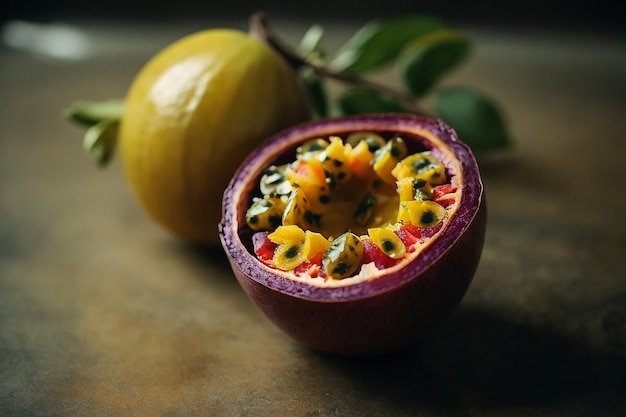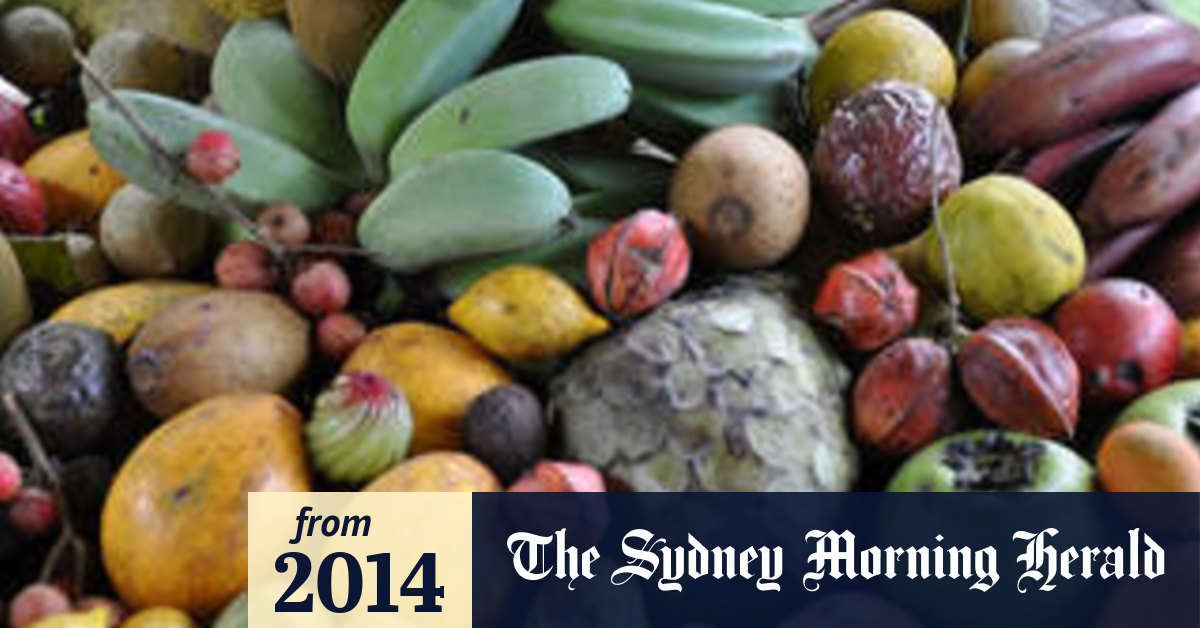A Taste of Paradise: Exploring Australia’s Unique and Delicious Native Fruits
A Taste of Paradise: Exploring Australia’s Unique and Delicious Native Fruits

Australia, a land of diverse landscapes and fascinating wildlife, also boasts a rich tapestry of native fruits. These fruits, often overlooked in favor of their more familiar counterparts, offer a unique and delicious taste of the continent’s natural bounty. From the vibrant colours of the Davidson plum to the sweet aroma of the quandong, Australia’s native fruits are a culinary treasure waiting to be discovered.
A Journey Through Australia’s Fruitful Landscape:
Related Articles: A Taste of Paradise: Exploring Australia’s Unique and Delicious Native Fruits
- Nourishing The Land, Nourishing The Soul: A Deep Dive Into Australian Aboriginal Food Systems And Cultural Ownership
- The Art Of Healing: Exploring Australian Bush Flower Essences Through Sketching And Art
- A Bounty Of Oil: Exploring The Oleaginous Fruit Gems Of Australia
- Unfurling The Symbol Of Resilience: The Meaning And Significance Of The Aboriginal Flag
- A Tapestry Of Tradition: Unveiling Unique Aboriginal Girl Names
Australia’s native fruits are a testament to the continent’s unique flora and fauna. These fruits have evolved over millennia to thrive in the harsh Australian climate, developing distinctive characteristics and flavors. Their diversity is remarkable, ranging from juicy berries to fleshy fruits with a surprising array of textures and tastes.
The Iconic Davidson Plum:
The Davidson plum, a small, deep purple fruit, is a true icon of Australian native fruits. Its tangy, slightly tart flavor is reminiscent of a combination of blackberry and plum, making it a popular ingredient in jams, sauces, and even alcoholic beverages. It’s also a rich source of antioxidants and vitamin C, adding a nutritional punch to any dish.
The Sweet and Delicate Quandong:
The quandong, a fleshy, apricot-like fruit, is native to the arid regions of Australia. Its sweet, slightly tart flavor and vibrant orange color make it a popular ingredient in desserts, jams, and chutneys. The quandong is also a source of vitamin C and antioxidants, contributing to its growing popularity in the health food industry.
The Versatile Bush Tomato:
The bush tomato, also known as the kangaroo apple, is a small, red fruit with a unique, earthy flavor. It’s a versatile ingredient that can be used in salads, sauces, and even as a garnish. The bush tomato is also known for its high levels of antioxidants and its potential to boost the immune system.
The Refreshing Finger Lime:

The finger lime, a citrus fruit with a unique appearance, is known for its juicy, caviar-like pearls. These pearls burst with a refreshing, citrusy flavor, making them a popular addition to cocktails, salads, and desserts. The finger lime is also a good source of vitamin C and antioxidants.
The Sweet and Tart Kakadu Plum:
The kakadu plum, a small, yellow fruit, is renowned for its exceptionally high vitamin C content. It’s also a good source of antioxidants and iron. The kakadu plum’s tart flavor is often balanced with sugar or honey, making it a popular ingredient in jams, sauces, and juices.
The Unique and Flavorful Riberry:
The riberry, a small, black fruit with a distinctive, sweet and tart flavor, is a popular ingredient in jams, sauces, and chutneys. It’s also a good source of vitamin C and antioxidants.
The Delicious and Versatile Native Peach:
The native peach, also known as the "peach of the bush," is a small, fleshy fruit with a sweet and slightly tart flavor. It’s a versatile ingredient that can be eaten fresh, used in jams, or added to desserts.
The Rare and Delectable Illawarra Plum:
The Illawarra plum, a small, round fruit with a sweet and tangy flavor, is a rare and highly prized delicacy. It’s often used in jams and sauces, but can also be eaten fresh.
Beyond the Plate: The Cultural Significance of Native Fruits:

Beyond their culinary value, Australia’s native fruits hold deep cultural significance for Aboriginal Australians. These fruits have been a vital source of food and medicine for millennia, playing a crucial role in traditional Aboriginal culture and knowledge systems.
Preserving the Future of Native Fruits:
The future of Australia’s native fruits depends on preserving their natural habitat and promoting their sustainable cultivation. Efforts are underway to cultivate these fruits on a commercial scale, making them more accessible to a wider audience.
A Culinary Adventure Awaits:
Exploring the world of Australia’s native fruits is a culinary adventure waiting to be embarked upon. From the tartness of the Davidson plum to the sweetness of the quandong, these fruits offer a unique and delicious taste of Australia’s natural bounty.
Beyond the Flavor: The Health Benefits of Native Fruits:
Australia’s native fruits are not just delicious; they’re also packed with health benefits. Many of these fruits are rich in antioxidants, vitamins, and minerals, contributing to overall well-being.
The Role of Native Fruits in Modern Cuisine:
In recent years, Australia’s native fruits have gained increasing popularity in modern cuisine. Chefs are incorporating these unique ingredients into their dishes, showcasing their versatility and flavor profiles. From innovative desserts to savory sauces, native fruits are adding a touch of Australian authenticity to the culinary landscape.
Embracing the Future of Native Fruits:
The future of Australia’s native fruits is bright. As awareness of their unique flavors and health benefits grows, these fruits are poised to become a staple in Australian kitchens and beyond.
FAQ about Australian Native Fruits:
Q: Where can I find Australian native fruits?
A: Native fruits can be found at specialty food stores, farmers markets, and online retailers. Some supermarkets also carry a limited selection of native fruits, particularly during the peak season.
Q: Are native fruits difficult to grow?
A: The ease of growing native fruits varies depending on the species. Some, like the quandong, require specific conditions, while others, like the Davidson plum, are relatively easy to cultivate.
Q: What are some ways to use native fruits in cooking?
A: Native fruits can be used in a variety of ways, from jams and sauces to desserts and savory dishes. They can also be eaten fresh, added to smoothies, or used to make juices and cordials.
Q: What are the health benefits of native fruits?
A: Many native fruits are rich in antioxidants, vitamins, and minerals, which can contribute to overall health and well-being.
Q: How can I support the sustainable cultivation of native fruits?
A: By purchasing native fruits from reputable sources, you can support their sustainable cultivation. You can also learn more about native fruits and share your knowledge with others.
Conclusion:
Australia’s native fruits are a testament to the continent’s unique biodiversity and culinary heritage. They offer a unique and delicious taste of the Australian landscape, while also providing a wealth of health benefits. As awareness of their value grows, these fruits are poised to play an increasingly important role in Australian cuisine and culture.

Closure
Thus, we hope this article has provided valuable insights into A Taste of Paradise: Exploring Australia’s Unique and Delicious Native Fruits. We thank you for taking the time to read this article. See you in our next article!



